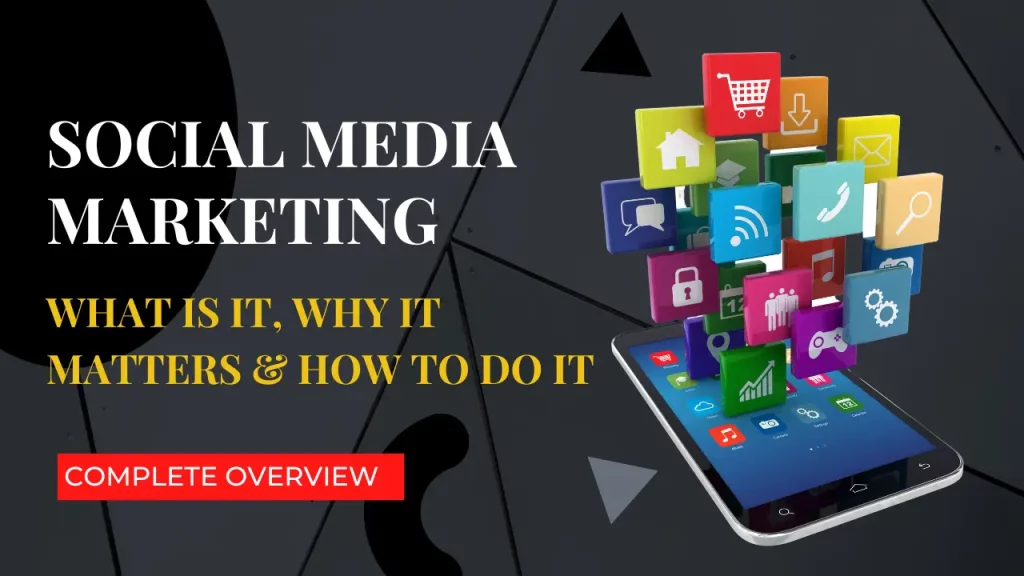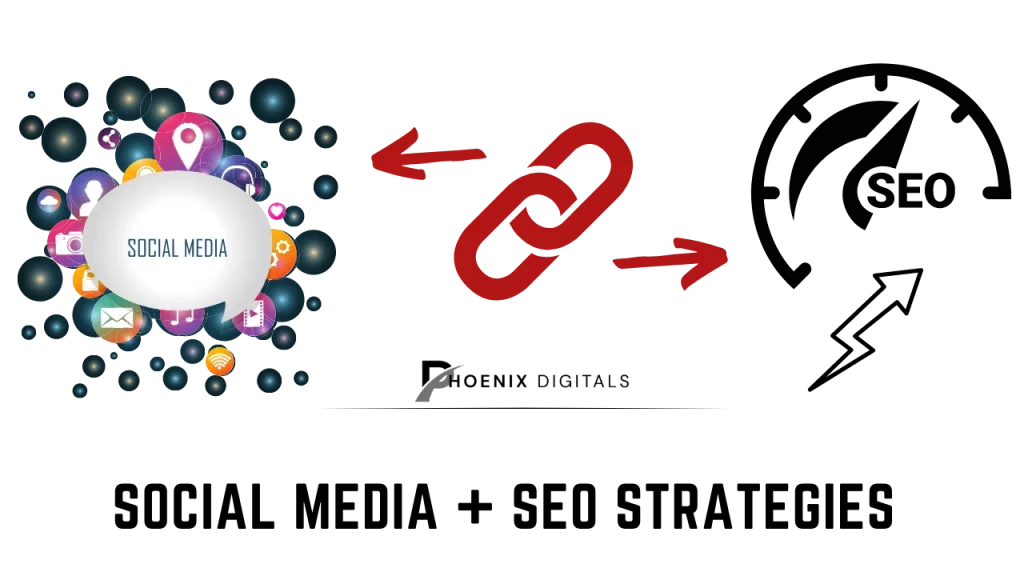Did you know that over 4 billion people worldwide use social media platforms? With such a vast audience, it’s no wonder that social media marketing (SMM) has become a key part of any successful marketing strategy.
Social media marketing involves promoting your brand or business on various platforms to increase engagement and sales. It’s a cost-effective way to reach a massive audience, with 73% of marketers claiming that social media marketing has been “somewhat effective” or “very effective” for their business.
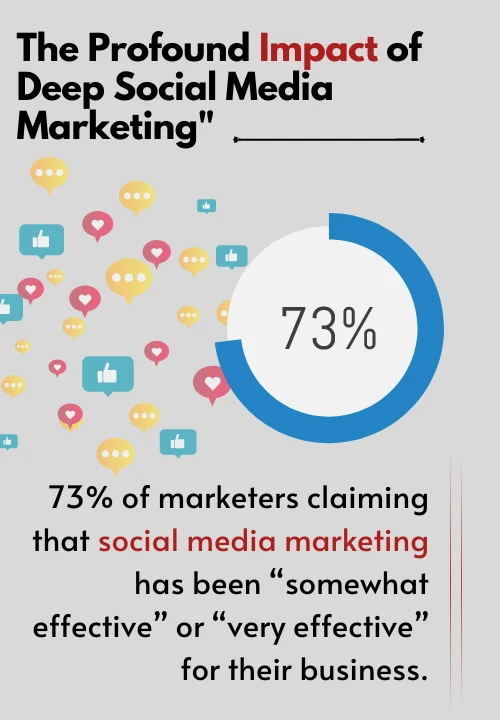
Whether you’re a small business owner or a large corporation, social media marketing can help you establish your brand’s identity, connect with customers, and build a loyal following.
In this article, we’ll explore the ins and outs of social media marketing, from creating a content strategy to advertising on social media platforms.
By the end of this article, you’ll be equipped with the knowledge and tools to start implementing social media marketing for your business and take advantage of its benefits.
Social Media Marketing (SMM): What Is It?
But what is SMM? Social media marketing, or SMM, is a unique way that ensures a smooth customer journey with an exponential increase in engagements leading to a greater number of future conversions and customer retentions.
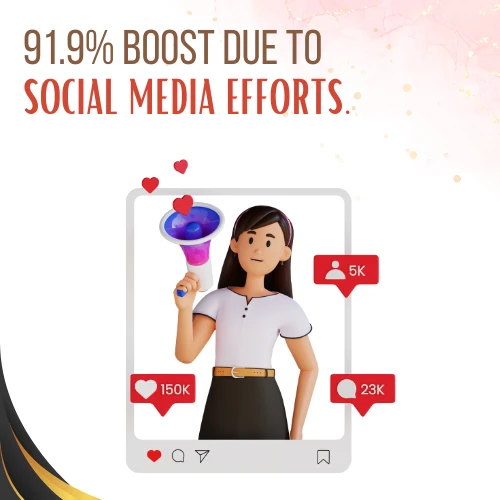
As with the name, you already know that our work revolves around social media platforms, including:
- Youtube
- TikTok
- Snapchat
All these platforms have different working methods but have the same intent to increase the engagement of your brand or business.
But what stuff can be posted on these platforms? This can include text, images, videos, and other multimedia formats. Creating content that resonates with your target audience can build a loyal following and establish your brand identity.
Social Media Marketing (SMM): What Is It Important?
Being a businessman, the only thing on your mind about your brand is to increase your paying customers. And it makes sense.
But, not every entrepreneur successfully creates a strong brand style that will help him dominate his online presence over his competitors.
There’s one thing that this 21st century has given you! The Social Media! These platforms have incredible power to amplify your brand voice and take it across borders! That is why everybody talks about using social media to scale their brand from 0 to hero!
Now, let’s see how social media can help you with your business:
97% of marketers believe it helps them reach a wider audience.
Recent research conducted by GlobalWebIndex has found that a significant percentage of social media users, 54% utilize social media platforms to conduct product research.
Moreover, the study has revealed that 71% of social media users are more likely to purchase after interacting with a brand on social media.
These statistics highlight the importance of social media marketing as an effective tool to drive sales and increase brand engagement.
How Social Media Marketing Can Boost Your Business
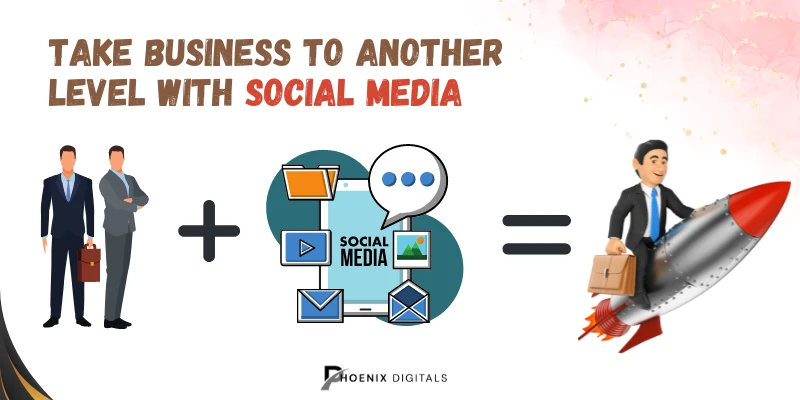
Social media channels are a great way to reach new potential customers and showcase your services or products. By creating high-quality content on social media, businesses can reach many people who may have yet to hear about them through traditional advertising methods.
Furthermore, by using targeted ads on platforms such as Facebook and Instagram, businesses can target specific audience demographics and maximize their reach.
Engage With Your Customers
Social media also provides a great platform for engaging and building relationships with existing customers.
Through social media, businesses can quickly respond to customer complaints or inquiries, answer questions about their services or products, provide helpful tips and advice related to their area of expertise, and just generally stay connected with their customers.
This helps foster loyalty among existing customers and makes them more likely to return for future purchases or services.
Grow Your Brand Awareness
Brand awareness is key to growing your business. The more people know about your brand, the more likely they will consider your products or services when needed.
With social media marketing, businesses can create unique campaigns that will help increase their brand awareness significantly.
From creating hashtag campaigns on Twitter to sponsored posts on Instagram or YouTube videos that showcase what makes your business unique—the possibilities are endless for boosting your brand’s visibility on social media platforms.
| Platforms | Active Users | Key Benefits for Businesses |
| Largest social media platform with 2.9 billion active users | Build brand awareness, connect with customers, increase sales | |
| Microblogging platform with 330 million monthly active users | Engage with customers, share news and updates, improve online presence | |
| Professional networking platform with 34.5 million users per day | Establish brand identity, connect with industry professionals, recruit top talent | |
| Popular visual platform with 1.21 billion active users | Showcase products and services, connect with customers, build a loyal following | |
| YouTube | Second-largest search engine with 2.6 billion active users | Share video content, tutorials, product reviews, reach a massive audience |
| Snapchat | Platform with 500 million monthly active users popular among younger audiences | Create engaging and interactive content, increase brand awareness |
| TikTok | Popular short-form video content platform with 1 billion active users | Create content that resonates with younger audiences, improve brand engagement |
Steps To Start Social Media Marketing For Your Business
Social media marketing can be valuable for businesses looking to increase brand awareness, drive traffic, and boost sales. Here are the steps to start social media marketing for your business:
Identity Your Target Audience
Identifying your target audience is a crucial aspect of social media marketing. Knowing your target audience allows you to create content that resonates and engages with them effectively. According to a report by Hootsuite, around 3.96 billion people use social media worldwide.


This vast number of users makes it crucial for businesses to identify their target audience to stand out and connect with potential customers.
To identify your target audience, you should consider factors such as age, gender, location, interests, and behavior.
Social media analytics tools such as Facebook Insights, Twitter Analytics, and Instagram Insights can help you gain insights into your audience’s demographics, interests, and behavior patterns.
You can also conduct surveys or analyze customer data to understand their preferences and needs.
Set Goals And Objectives
74% of people use social networks to make purchasing decisions. Setting clear goals and objectives is essential in any social media marketing strategy. It helps you measure your success and determine if your efforts generate the desired results.
Your social media goals and objectives should align with your overall business objectives. They should be specific, measurable, achievable, relevant, and time-bound (SMART).
For instance, your goal could be increasing brand awareness, generating leads, driving website traffic, or increasing sales.
To achieve your goals, you need to set specific objectives that are aligned with your goals.
For instance, if your goal is to increase brand awareness, your objectives could be to increase your social media following, increase the number of shares, and increase engagement on your posts.

Create A Content Strategy
Content is king, and if you want to get noticed by your target audience, you need to create a content strategy that will help you stand out from the crowd.
A content strategy is a plan for creating and delivering content that aligns with your business’s goals.
It should include a plan for producing high-quality content that engages your audience and drives traffic to your website.
Designe Your Ads as per following ratios. (Discribed in Picture Below)

Understand The Different Types Of Content
69% of successful marketers have a documented content strategy.
You can create many different types of content, including blog posts, videos, infographics, and podcasts. You should determine what type of content works best for your business.
For example, if you’re targeting visual learners, then videos may be the best option for reaching them.
You should also consider the types of content that will engage your target audience most effectively and ensure that each piece of content is valuable and relevant to them.
Plan Your Content Calendar
Once you know what content you’ll be creating, it’s time to devise a plan for when each piece will go live. Creating a calendar helps ensure that all pieces are published promptly and lets you track how each post or video performs over time.
This also helps structure your overall marketing strategy and keep track of any upcoming campaigns or initiatives related to the content being produced.
Create A Content Mix
Creating various types of content helps keep things fresh and engaging for readers. Don’t just stick with one type; mix it up!
Try creating blog posts one week and videos the next week; this will help ensure that there’s something new every time someone visits your website or social media page.
Moreover, try using visuals such as images or GIFs within your written posts; these can help break up text-heavy posts into more easily digestible chunks while still delivering valuable information.
Use Visuals And Videos
Using visuals and videos is an effective way to grab your audience’s attention and increase engagement on social media.
Tweets with images receive 150% more retweets than tweets without images, and visual content is 40 times more likely to be shared on social media than other types of content.

Using high-quality images and videos relevant to your brand and message is important when creating visual content.
You can also use Canva or Adobe Spark tools to create engaging graphics, infographics, and videos.
Ensure your visuals are eye-catching, and use colors, fonts, and design elements that align with your brand.
Create Engaging Captions
In addition to visuals, creating engaging captions is essential in social media marketing. Captions provide context and help your audience understand your message. They should be concise, relevant, and attention-grabbing. You can use storytelling, humor, and emotion to make your captions more engaging and memorable.
It’s also important to use hashtags in your captions to increase your reach and visibility. Hashtags help your content appear in relevant searches and conversations on social media. You can research popular hashtags in your industry and use them strategically in captions.
Build Your Social Media Presence
To build a social media presence, choose the most relevant platforms for your target audience and create compelling content that resonates with them.
Consistency is key to building a strong social media presence, so post regularly and engage with your followers.
Build A Brand Identity
Your brand identity sets you apart from your competitors and helps your audience identify and recognize your business.
To build a strong brand identity, it is crucial to have a clear understanding of your business’s values, mission, and target audience.
Use a consistent color scheme, font, and design elements to ensure brand recognition across all social media platforms. Create a unique brand story and incorporate it into your social media content to create an emotional connection with your audience.
Create A Consistent Brand Image
Consistency is key to building a strong brand image. Your brand image should be consistent across all platforms and marketing materials.
This includes your logo, color scheme, typography, and overall aesthetic.
Consistency helps establish brand recognition for building trust and credibility with your audience.
Use the same color scheme and typography across all platforms, and use your logo consistently.
Establish Your Brand Voice
Your brand voice is your tone and personality to communicate with your audience. It should reflect your brand’s values, mission, and vision.
To establish your brand voice, you must define your brand’s personality and use it consistently across all communication channels. Your brand voice should be consistent with your brand identity and image.
Develop A Community
Developing a community on social media is a great way to engage with your audience and build brand loyalty. You can create a community by engaging with your followers, responding to their comments and messages, and creating user-generated content.
Create groups on social media platforms that are relevant to your brand and invite your followers to join.
Increase Your Followers And Engagement
Increasing your followers and engagement on social media can be challenging, but it’s essential for building a strong social media presence.
You can increase your followers and engagement by creating compelling content that resonates with your target audience. Run social media campaigns, use hashtags, and collaborate with other brands and influencers.
Leverage Influencers
Influencers can be a powerful tool for building brand awareness and increasing engagement on social media. You can leverage influencers by partnering with them to create sponsored content or collaborate with them on social media campaigns.
When choosing influencers to work with, ensure they align with your brand values and have a similar target audience.
Advertise On Social Media
Social media advertising can help you grow your business and expand your customer base.
Types Of Social Media Advertising
The most popular forms of social media advertising are display ads, sponsored posts, video ads, and influencer marketing.
- Display ads are the most common type of social media ads; they often appear in the sidebar or at the bottom of a web page to increase brand awareness or generate leads.
- Sponsored posts are when companies pay to have their content appear on a user’s timeline or newsfeed; they are generally used to increase engagement with an existing audience or target new customers.
- Video ads allow companies to use videos as part of their marketing efforts; these videos are typically shorter than traditional commercials but still provide an entertaining way for brands to showcase their products and services.
- Influencer marketing is when companies partner with influential people in a given industry to promote their products or services; this type of advertising is especially popular among Millennials and Gen Zers, who tend to trust influencers more than traditional advertisements.
Set A Budget And Goal
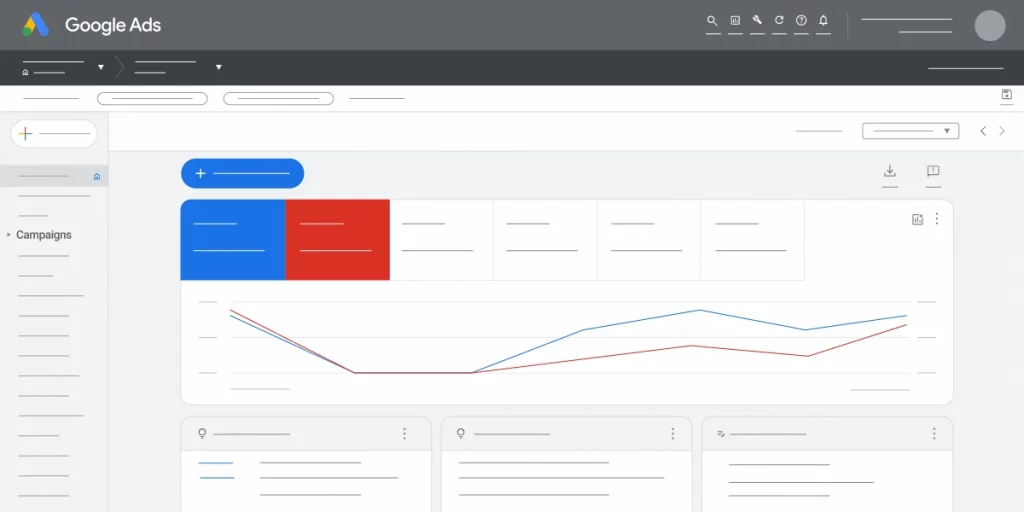
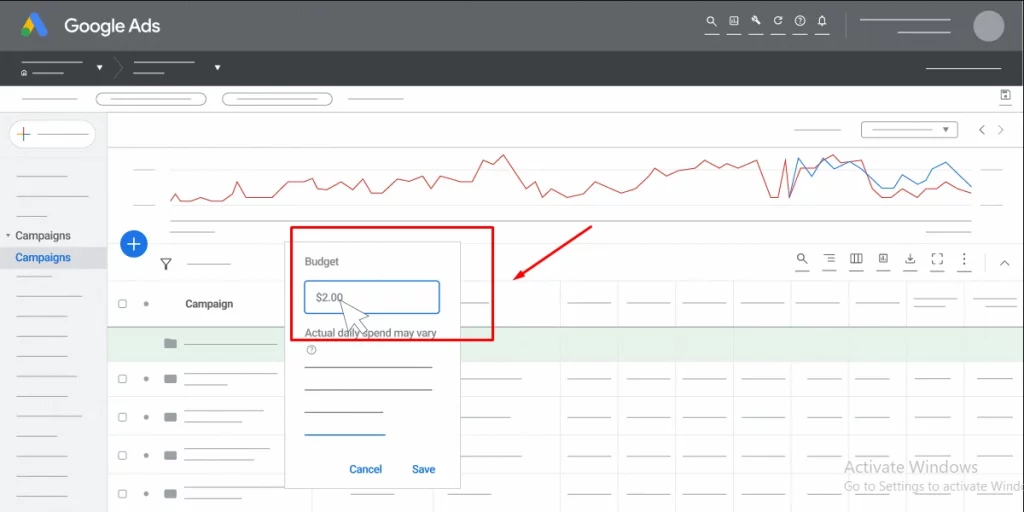
Before launching any ad campaign on social media, you must set a budget and specific goals for what you want your ad campaign to accomplish. This will help ensure your campaign is successful and you don’t overspend on unnecessary costs.
Setting goals will help determine which ad campaign best suits your needs (e.g., display ads vs. sponsored posts).
For example, if your goal is to increase brand awareness, sponsored posts might be the best option, whereas display ads might be more appropriate if your goal is lead generation.
Create Effective Ads Campaigns
Once you have determined which ad campaign you would like to run, it’s time to start creating effective ad campaigns. This means selecting attractive visuals, such as images or videos, that will grab people’s attention and writing compelling copy that resonates with potential customers.
It also means utilizing tools such as A/B testing to optimize each aspect of your ad before launching it out into the world!
Additionally, you must keep track of all the metrics associated with each campaign to better understand what works and what doesn’t when engaging potential customers via social media advertising.
Measure And Analyze Ads Performance
Measuring and analyzing ad performance is essential to understanding the effectiveness of your advertising efforts. By monitoring metrics and analyzing data, you can identify areas of improvement and optimize your campaigns to achieve better results.
One of the most important metrics to monitor is the click-through rate (CTR). CTR measures the percentage of people who click on your ad after seeing it. According to WordStream, the average CTR for Google Ads across all industries is 3.17%, while the average CTR for Facebook Ads across all industries is 0.9%.

Another important metric to monitor is the cost per click (CPC). CPC measures how much you pay for each click on your ad. The average CPC for Google Ads across all industries is $2.69, while the average CPC for Facebook Ads is $1.72.

Conversion rate is also a crucial metric to track. After clicking on your ad, the conversion rate measures the percentage of people who take a desired action, such as purchasing or filling out a form.
You can use analytics tools like Google Analytics or Facebook Ads Manager to analyze ad performance.
These tools allow you to track and measure key metrics, create custom reports, and optimize your campaigns based on data-driven insights.
Tips For Success In Social Media Marketing
Here are some tips for success in social media marketing:
Keep Up With The Latest Trends
Social media constantly evolves with new platforms, features, and emerging trends. To succeed in social media marketing, staying up-to-date with the latest trends and best practices is crucial.
According to HubSpot, some of the top social media trends for 2023 include increased use of video content, the rise of niche social media platforms, and the growing importance of social commerce.
Be Authentic And Genuine
Authenticity, and genuineness are essential in social media marketing. Consumers are looking for brands that they can trust and relate to on a personal level.
To be authentic and genuine, focus on creating content that aligns with your brand values and personality, and engage with your audience genuinely and honestly.
Engage With Your Audience
Engaging with your audience is critical to building a strong social media presence.
According to Sprout Social, 71% of consumers who have a positive experience with a brand on social media are likely to recommend it to others.
To engage with your audience, respond to comments and messages, ask questions, and create user-generated content that encourages interaction.
Monitor Your Social Media Presence
Monitoring your social media presence is crucial to maintaining a positive brand reputation and staying on top of negative feedback or issues. Use social listening tools to monitor mentions of your brand and industry keywords and respond promptly to negative comments or reviews. According to a study by Salesforce, 71% of consumers who have a positive experience with a brand on social media are likely to recommend it to others.
Measure Your Results And Adjust Your Strategy
You can track several metrics to measure your social media performance, including engagement, reach, impressions, click-through rates, and conversions.
- Engagement is one of the most important metrics to track, as it measures how much your audience interacts with your content. This includes likes, comments, shares, and clicks. The higher your engagement rate, the more likely your content will resonate with your audience.
- Reach and impressions are also important metrics to track, as they measure the number of people who see your content. Reach refers to the number of unique users who see your content, while impressions refer to the number of times your content is viewed. The Average organic reach on Facebook is 5.5%, while the average on Instagram is 34.37%.

- Click-through rates (CTR) measure the percentage of people who click on your content after seeing it. CTR is important because it indicates your call-to-action (CTA) effectiveness.
- Conversions measure the percentage of people who take a desired action after clicking on your content, such as purchasing or filling out a form. Conversion rates vary widely depending on the industry and the measured action. According to a study by WordStream, the average conversion rate for Google Ads across all industries is 3.75%.
Once you have measured your results, you can adjust your strategy accordingly to optimize your results. For example, if your engagement rate is low, you can experiment with different types of content to see what resonates with your audience. If your CTR is low, you can adjust your CTAs to make them more compelling.
By continually measuring and adjusting your strategy, you can achieve better results and maximize the ROI of your social media marketing efforts.
Challenges And Solutions In Social Media Marketing
Social media marketing is a powerful and versatile tool that can be used to reach potential customers, advertise special offers, and gain valuable insights into consumer behavior. However, it also brings certain challenges that businesses must understand to succeed.
From negative customer feedback to algorithm changes, there are several hurdles that every business must overcome to make the most of its social media marketing efforts.
Deal With Negative Feedback
Unfortunately, not everyone interacting with your brand will be satisfied with their experience.
As such, it’s important to plan to deal with negative customer feedback on social media. The best way to handle this situation is by responding quickly and professionally.
Acknowledge the complaint and ask what you can do to make things right, then follow up as soon as possible to ensure that the customer is happy with your response.
This will go a long way toward building trust and maintaining positive customer relationships.
Maintain A Consistent Brand Image
One of the biggest obstacles facing businesses on social media is keeping their brand image consistent across multiple platforms. It can be difficult to maintain a unified message when different teams handle different accounts on different sites or when different departments within an organization have their accounts.
The key here is having clear guidelines for how each account should be managed, including rules about posts, branding elements (such as logos), tone of voice, etc., so everyone knows what they need to do to ensure consistency across all accounts.
Keep Up With Algorithm Changes
Social media algorithms constantly change, so marketers must stay on top of the latest changes to keep their content visible in users’ news feeds.
You should regularly review trends and updates from major networks such as Facebook and Instagram to do this. Hence, you know exactly what adjustments must be made for your content strategy to remain effective.
By staying ahead of algorithm changes, you can ensure that your content remains visible even when the rules change unexpectedly or dramatically.
Manage Multiple Social Media Accounts
Managing multiple social media accounts can take time and effort. Still, it doesn’t have to be overwhelming if you utilize automation tools such as Hootsuite or Buffer, which allow you to manage multiple accounts from one platform.
Automation tools also make it easier for large teams or small businesses because they provide detailed analytics reports that give insight into performance metrics.
You can track progress over time and adjust strategies accordingly if needed.
Right Balance Between Organic And Paid Social Media Strategies
Organic and paid social media strategies to have their strengths and weaknesses. It’s important to find a balance between the two to maximize your reach without spending too much time or money on one strategy or the other.
For example, organic strategies such as regular content creation and sharing can help build customer relationships. In contrast, paid strategies such as promotions and sponsored campaigns can quickly expand your reach to a new audience.
By blending organic and paid strategies, you can take advantage of both while avoiding the pitfalls of either one alone.
Case Studies And Examples Of Successful Social Media Marketing
Here are some examples of small businesses that have grown through social media marketing, case studies of successful social media campaigns, and examples of how businesses have leveraged social media to increase sales and revenue
- Nike: Nike’s “Just Do It” campaign was a huge success, generating much buzz and engagement on social media. The campaign was focused on inspiring people to take action and pursue their dreams, with Nike sharing inspirational stories and quotes on its social media platforms.
- Airbnb: Airbnb’s “Live There” campaign was aimed at encouraging people to experience travel as a local rather than a tourist. The company created a series of visually stunning ads and videos shared on social media platforms like Instagram and Facebook. This campaign helped Airbnb to stand out in a crowded travel market and increase its brand awareness.
- Coca-Cola: Coca-Cola’s “Share a Coke” campaign was a huge success on social media, generating over 235,000 tweets and 150,000 Instagram posts using the hashtag #shareacoke. The campaign printed popular first names on Coke bottles and cans, encouraging people to share them with friends and family.
- GoPro: GoPro’s social media strategy focuses on user-generated content, encouraging its customers to share their adventures and experiences using its products. GoPro’s social media channels are filled with stunning photos and videos from its customers, which helps to showcase the company’s products and inspire others to take action.
- Old Spice: Old Spice’s “The Man Your Man Could Smell Like” campaign was a huge social-media success, generating over 180 million YouTube views and 80,000 Facebook likes. The campaign featured a series of humorous videos that poked fun at traditional male grooming ads and helped to position Old Spice as a fun and irreverent brand.
- Warby Parker: Warby Parker, a company that sells eyeglasses online, uses social media to showcase its products and connect with its customers. The company’s Instagram account has over 1 million followers, and Warby Parker uses its social media platforms to showcase user-generated content and provide personalized customer service.
Frequently Asked Questions (FAQs)
How Does Social Media Attract Customers For Business?
Social media can be an effective tool for businesses to reach their target audience, build relationships with customers, and increase brand awareness. By using social media platforms like Facebook, Twitter, and Instagram, businesses can connect with potential customers and create meaningful conversations that will help attract them to their products or services.
How Does Social Media Impact Marketing For A Business?
Social media has become an essential part of modern marketing strategies. It allows businesses to reach a wide range of audiences quickly and easily while providing valuable insights into customer behavior. Additionally, social media can be used to create engaging content that will help drive traffic to a business’s website or other online channels.
What Are The 5 Benefits Of Social Media Marketing?
The five main benefits of social media marketing are increased brand awareness, improved customer engagement and loyalty, cost-effectiveness compared to traditional marketing methods, the ability to reach diverse audiences quickly and easily, and the ability to generate leads directly or indirectly.
Winning Combination: Social Media and Business Growth
In conclusion, social media marketing has become an essential tool for businesses of all sizes to connect with their target audience, build brand awareness, and drive sales.
By understanding your audience, choosing the right platforms, creating engaging content, and leveraging paid advertising, you can effectively use social media to achieve your marketing goals.
However, it’s important to continually monitor and adjust your strategy to stay relevant and achieve the best results.
So, if you haven’t already, it’s time to start incorporating social media marketing into your overall marketing plan and see the benefits for yourself.
Don’t wait any longer; get started today!

